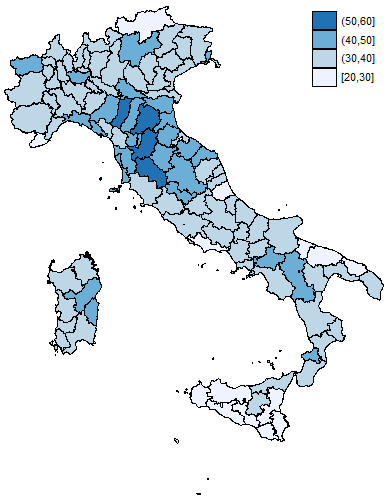Italian political science review (2017)
The Italian 2013 election ended the period of bipolarism that characterized the so-called ‘Second Republic’, and paved the way for new parties such as the Five Star Movement.
We investigate that election, which took place after the technocratic government led by Mario Monti, through the analytical lenses of the retrospective theory of economic voting applied at the provincial level. Local unemployment rates shape the electoral performances
of those parties that were more supportive and sympathetic to the caretaker executive, thus confirming a distinction between incumbent and non-incumbent even in that critical and politically undecided election. We further contribute to the literature on retrospective voting by relaxing the locally untenable assumption of independence among the units. Making use of spatial regression models, we demonstrate the relevance of both the internal and contiguous economies, and their relative impact due to the different size of the provinces.


